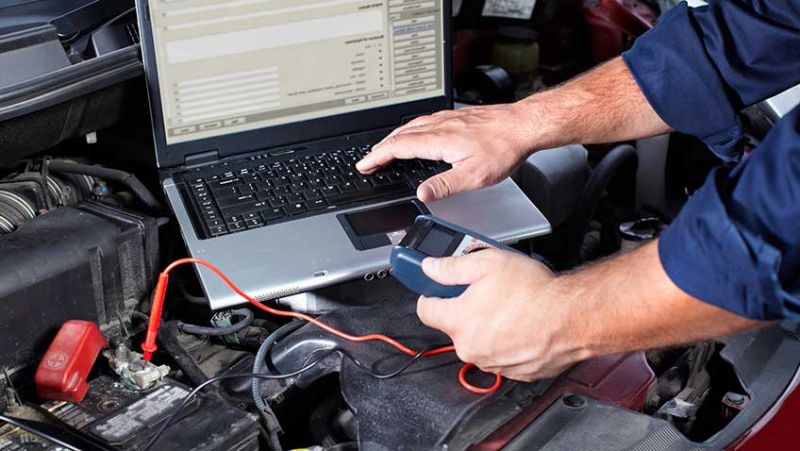
As a car owner, it's essential to stay vigilant about the condition of your vehicle. Ignoring warning signs can lead to costly repairs and unsafe driving conditions. In this blog post, we will discuss the top 10 signs that indicate your car needs immediate repair. By recognising these signs early, you can save yourself time, money, and ensure your safety on the road.
1. Warning Lights on the Dashboard
One of the most obvious signs that your car needs repair is the illumination of warning lights on your dashboard. These lights can indicate various issues, from low oil pressure to engine problems. If you see a warning light, consult your owner's manual to understand its meaning and take action accordingly.
Common Warning Lights to Watch For:
- Check Engine Light: Indicates a potential engine issue.
- Oil Pressure Light: Signals low oil pressure, which can lead to engine damage.
- Battery Light: Suggests a problem with the electrical system or battery.
2. Unusual Noises
Strange noises coming from your vehicle can be a clear indication that something is wrong. Pay attention to any new sounds, such as grinding, squeaking, or knocking. These noises can be signs of various issues, including brake problems, engine troubles, or issues with the suspension system.
Types of Noises to Note:
- Grinding: Often indicates brake wear or failure.
- Squeaking: May suggest worn-out belts or suspension components.
- Knocking: Could be a sign of engine problems or low oil levels.
3. Fluid Leaks
Finding puddles of fluid under your car is a sign that something is amiss. Different fluids can indicate various issues, and identifying the type of fluid can help diagnose the problem.
Common Fluid Types and Their Meanings:
- Oil: Dark brown or black; indicates an oil leak.
- Coolant: Bright green, orange, or pink; suggests a cooling system leak.
- Transmission Fluid: Red or brown; indicates a transmission issue.
4. Difficulty Starting the Engine
If your car struggles to start or makes clicking noises when you turn the key, it could be a sign of a failing battery, starter, or alternator. Addressing these issues promptly can prevent you from being stranded.
Potential Causes of Starting Issues:
- Weak Battery: May need replacement.
- Faulty Starter: Could require repair or replacement.
- Alternator Problems: May not be charging the battery properly.
5. Poor Braking Performance
Your brakes are one of the most critical safety features of your vehicle. If you notice any changes in braking performance, such as a spongy brake pedal, grinding noises, or a longer stopping distance, it’s crucial to have your brakes inspected immediately.
Signs of Brake Issues:
- Spongy Brake Pedal: Indicates air in the brake lines or low fluid levels.
- Grinding Noises: Suggests worn brake pads.
- Vibration: May indicate warped rotors.
6. Excessive Exhaust Smoke
Seeing excessive smoke from your exhaust can indicate serious engine problems. The color of the smoke can help identify the issue.
Types of Exhaust Smoke:
- Blue Smoke: Indicates burning oil, which could mean worn engine components.
- White Smoke: Suggests coolant is leaking into the engine.
- Black Smoke: Indicates an overly rich fuel mixture, often due to a faulty fuel injector.
7. Steering Issues
If you experience difficulty steering, such as a stiff steering wheel or pulling to one side, it could indicate problems with your power steering system or alignment issues. These problems can affect your ability to control the vehicle safely.
Common Steering Problems:
- Stiff Steering Wheel: May indicate low power steering fluid or a failing pump.
- Pulling to One Side: Could suggest alignment issues or uneven tire pressure.
8. Unpleasant Odors
Strange smells inside or outside your vehicle can signal various issues. For example, a burning smell could indicate overheating or electrical problems, while a sweet smell might suggest a coolant leak.
Common Odors to Watch For:
- Burning Smell: Could indicate overheating or electrical issues.
- Sweet Smell: Suggests a coolant leak.
- Gasoline Smell: Indicates a fuel leak, which can be dangerous.
9. Tire Issues
Inspecting your tires regularly is crucial for safe driving. Look for signs of uneven wear, bulges, or low tire pressure. If you notice any of these issues, it’s essential to address them immediately.
Signs of Tire Problems:
- Uneven Wear: Could indicate alignment or suspension issues.
- Bulges or Blisters: Suggests a weak spot in the tire, which can lead to blowouts.
- Low Pressure: Can affect handling and fuel efficiency.
10. Unresponsive Acceleration
If your car hesitates or struggles to accelerate, it could indicate issues with the fuel system, transmission, or engine. This problem can be dangerous, especially in high-traffic situations.
Potential Causes of Acceleration Issues:
- Fuel System Problems: Clogged fuel filters or failing fuel pumps.
- Transmission Issues: Low fluid levels or mechanical failures.
- Engine Problems: Misfiring or other internal issues.
Conclusion
Being aware of the signs that your car needs immediate repair can help you maintain your vehicle's performance and safety. Regular maintenance and prompt attention to warning signs can save you money and prevent more severe issues down the road. If you notice any of the signs mentioned in this post, don’t hesitate to consult a professional mechanic. Your safety and the longevity of your vehicle depend on it!



